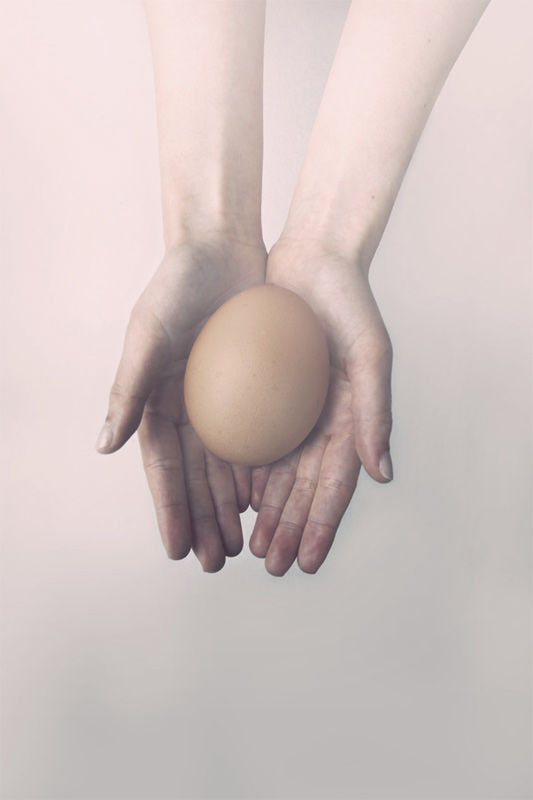A BIRD IN THE HAND
All images by the ICZ
Recording #1
Chicken Sexer
Chicken sexer
The Tamago Kyoso (Egg Competition) is held once a year in Osaka since 1965. Here, egg fanatics pit their eggs against each other and the smallest and biggest eggs of the day win. The competition is unique in the sense that only eggs from typical agricultural poultry chickens that are available in the mass market are eligible. In the early years of the competition, there was very little difference in the sizes of the biggest and smallest eggs. In the 1980s, when the breeders started mixing the breeds and genes of the chickens, the sizes of the eggs started to change noticeably.
Initiated by the local town council in 1963, the competition was a way to get farmers to breed chickens that grow faster and bigger in a shorter amount of time to meet the growing demand for poultry. Eggs were a strong indicator of the size of the chickens and also of its general health. Eggs with strong shells are a sure indicator of a good breed.
In 1992, the biggest egg in the competition measured a shocking 14cm in length and 8cm wide. The Miyaza Poultry Farm managed to cross the genes of a wild species of fowl with the domestic species, resulting in an extremely large hybrid. The breed did not last very long as its diet required thrice the amount of food as a normal chicken’s.
The largest egg belongs to the collection of Yurisa Nanjio, daughter of Tomo Nanjio, the original chicken breeder who bred the biggest egg-laying species. The family has been managing the archive of the egg competition and Yurisa has been collecting the winning eggs since 1999. She has amassed a huge collection of eggs of different weights and sizes.
Yurisa also worked as a chicken sexer at the Miyaza Poultry Farm. She has the rare ability to determine the sex of chicks right after they are born. Determining the sex of baby chicks is of vital importance in the poultry world where only the hens are the wanted sex for egg-laying. Chicken sexing, a process which has remained unchanged for the last 50 years, is done with machine-like speed and accuracy - but it takes split-second judgements that only a human can make. After they have been identified, the male chicks are then taken away to be killed in a meat grinder.
On a good day, Yurisa could sort 1000 chicks an hour, and she does so subconsciously. She has no idea how she makes her decisions and says it was a gift that her father had given her. To her knowledge, she says she has never encountered a chick whose sex she could not tell.
Tucked in a small corner of the museum at The Institute of Critical Zoologists in Fukuoka, Japan is a collection of eggs which she donated last year. The collection is growing everyday as the public is beginning to donate eggs of various sizes to her. Among the eggs, there is an unusual trio that stand out. These three eggs are exactly the same in shape, coloration, weight and thickness. They could well be exact clones of one another.
Yurisa says, “No two chicken eggs are the same size in this world. All eggs may look the same, but their measurements are hardly ever the same. It took me the last ten years to find these three eggs.”
She says she sometimes thinks about the male chicks that she has chosen for death and then she looks down at her hands. But she maintains that she has never made a mistake in all her years of chicken sexing.
Zhao Renhui
-
A Japanese translation of this text has been published in issue #9 of ‘Collectors Tomorrow’.

Egg #8, from the series, A Bird In The Hand
Copyright 2011, Institute of Critical Zoologists